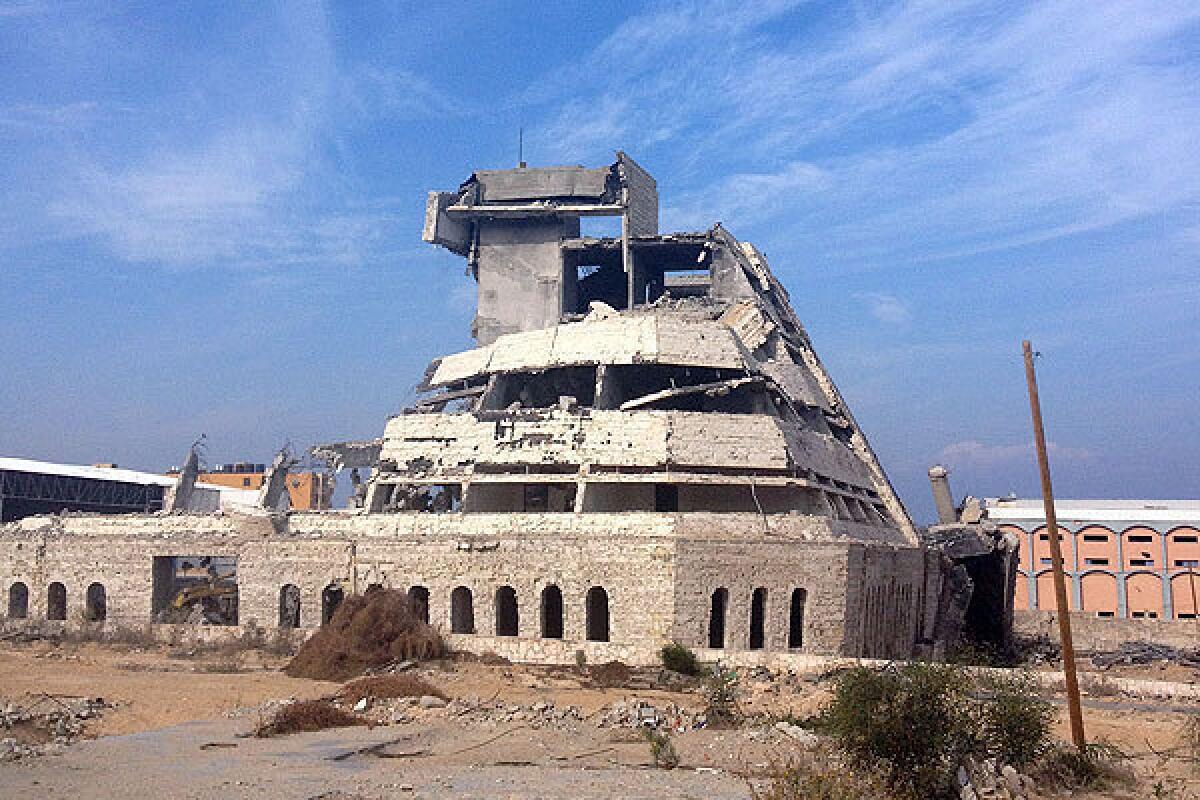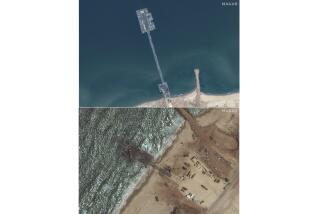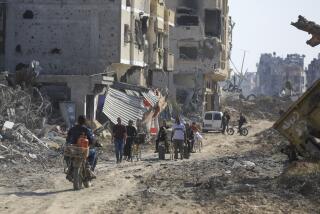Gaza City’s Mukhabarat building defies Israeli airstrikes

GAZA CITY — It’s the building that refuses to die.
Constructed more than a decade ago, the Mukhabarat building on the northwest edge of Gaza City was once home to the Palestinian Authority’s super-secret intelligence service. It was abandoned in 2007 after the Hamas militant group seized the Gaza Strip and chased out the rival Fatah party.
Vacant ever since, the once-grand structure has become something of a running joke: Israel keeps striking it over and over, yet a good-sized chunk of the five-story frame simply won’t fall down.
In virtually every conflict or flare-up between Israel and Hamas over the last five years, including the current one, the complex takes a few rockets or missiles. Twenty? Fifty? Neighbors say they’ve lost count.
“It’s amazing that anything’s left,” said Um Mohamed Khalaf, 42, who lives nest door with her eight children.
The building, dubbed “The Ship” for its massive size and stout shape, is a shell of its former self, and looks as if it won’t last much longer. There are just a couple of precariously leaning stories left and a curiously intact staircase.
TIMELINE: Israel-Gaza conflict
For many Gazans, the complex’s refusal to collapse has come to symbolize Palestinian survival and defiance.
No one knows why Israel keeps striking the empty building, though Khalaf said militants use the area to launch rockets. Others say it’s to intimidate the nearby residents.
Whatever the reason, people have learned to run whenever tension with Israel rises, expecting the besieged concrete building to receive a few more licks.
“I didn’t wait around this time and decided to move once the fighting began,” said cellphone vendor Ibrahim Omar, 25, who moved his pregnant wife to another part of the city. “It’s too dangerous to stay.”
Each time an Israeli airstrike hits, windows break and shrapnel flies into neighboring structures, including the high school next door. Many people stopped replacing windows because they just get broken again. One neighbor was wounded during an attack years ago.
“Once a piece of shrapnel landed in the kitchen and destroyed the refrigerator,” Khalaf said. “The kids are so terrified they wet the bed at night. We’d move, but we have no place go.”
At first, neighbors welcomed the building, which not only brought prestige to the area but also better security and reliable electricity. It was a source of pride, even though none of the residents were ever permitted to enter the tightly guarded facility.
After Fatah fled, locals rushed in for the first time, helping themselves to expensive furniture, computer equipment, window frames and anything else they could salvage.
But now the building is such an eyesore and target that the neighborhood wrote a letter to Hamas Prime Minister Ismail Haniyeh, asking that it be torn down and replaced with a hospital or sports stadium.
A few months ago, demolition crews got to work, destroying even more of the building. But the tear-down was interrupted when the conflict with Israel flared.
In recent days, Israeli strikes have hit around the perimeter of the building. No one’s sure whether it will survive another round of damage, said Abu Mohamed, who lives across the road and did not want to give his full name.
Even though he’s been fighting to have the building demolished, he acknowledged that he uses a photo of it taken during its better days as his computer’s screen saver.
Glancing over, he added with an air of nostalgia, “I’m going to miss it, actually.”
More to Read
Sign up for Essential California
The most important California stories and recommendations in your inbox every morning.
You may occasionally receive promotional content from the Los Angeles Times.










